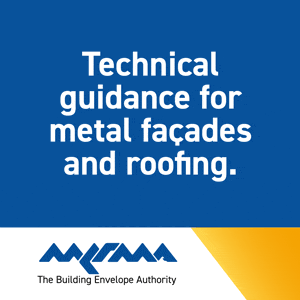Flat Roofing: The new hot melt code of practice
- Specify & Build
- Jul 31
- 3 min read

Mike Bradbury, Technical Guidance Manager at the Liquid Roofing and Waterproofing Association, discusses the newly updated Hot Melt Code of Practice and its importance for the flat roofing industry.
Over the past decade, construction industry guidance and practices have evolved significantly and continue to do so. These changes have had a direct impact on flat roofing, driving the need for technical resources reflecting the latest developments. The Liquid Roofing and Waterproofing Association’s (LRWA) new Hot Melt Code of Practice is a prime example, providing a valuable resource for specifiers and contractors alike.
Informed by technical experts from across the UK’s hot melt industry, the document provides comprehensive guidance on the design, specification, installation and maintenance of hot-applied polymer modified bitumen – frequently referred to as Hot Melt – waterproofing systems. It covers a range of applications, including roofs, podiums, terraces, balconies, and walkways.

Drivers of change
The LRWA first produced a Hot Melt Code of Practice in 2014. Since then, significant industry advancements have prompted the need for updated guidance. New technology has introduced single-layer hot melt systems alongside traditional two-layer versions. The use of inverted roofs has increased significantly, and there has been a growing need for blue roofs to support sustainable urban drainage strategies. British standards have changed too, specifically BS 6229 which has influenced best practices in flat roof design, specification and installation.
The LRWA’s 2025 Hot Melt Code of Practice reflects these developments, ensuring specifiers and contractors can access the latest technical information. Covering product selection and application, it aims to improve and maintain system performance as well as quality standards.
Navigating zero falls
Following the update to BS 6229 in 2018, the LRWA has worked with other trade associations to review advice about falls for inverted roofs. The outcome of this work is incorporated into the Hot Melt Code of Practice, providing clarity on how to achieve the correct falls on structural roof decks. For inverted roofs, zero falls can range from completely flat (0 degrees), to a slight slope of up to one in 80. However, for inverted blue roofs, absolute zero falls is required, meaning the surface must be completely flat with no slope at all. In either case, backfalls need to be avoided.
A major challenge is that construction tolerances and weight loads can cause unintended slopes or deflections, sometimes leading to water pooling in unwanted areas. Standing water can create structural loads the roof was not designed for, putting a strain on materials and components while reducing the roof’s thermal performance.
The document’s ‘Structural concrete decks and finishes’ section explains these issues in more depth, including the importance of eliminating backfalls to ensure suitable drainage. Advice on suitable substrates, finishes and screeds is also incorporated into this section along with recommendations on moisture and surface contaminant checks, preparation, testing and installation methods.

Meeting performance expectations
Design and installation considerations are covered extensively in the Hot Melt Code of Practice, including compliance with national building regulations and standards. The guidance explains how hot melt waterproofing systems must satisfy key physical properties, including resistance to fire and moisture, as well as the importance of suitable materials and workmanship.
Certification is also a key focus. The document recommends systems should be assessed under European Assessment Documents () EAD 030350-00-0402 and EAD 030065-00-0402) or hold an Agrément certificate from recognised bodies such as the British Board of Agrément (BBA) or Kiwa (BDA). These confirm system suitability and provide assurance of long-term performance.
Additional specification considerations in the code of practice include user loads, durability, climate, and thermal insulation together with installation advice on gutters, upstands and rooflights. The guidance also has sections dedicated to health and safety, substrate preparation, application, quality control, training and maintenance. By considering these factors, specifiers and contractors can ensure that hot melt waterproofing systems perform as expected, aligning with both the client’s requirements and the latest regulatory standards. The 2025 Hot Melt Code of Practice can be downloaded for free from the LRWA’s website.
.png)























































.png)

